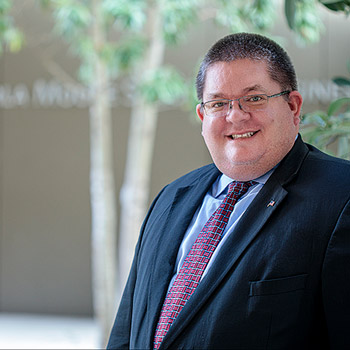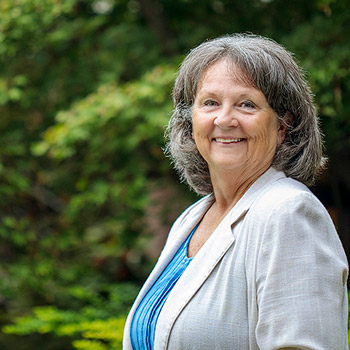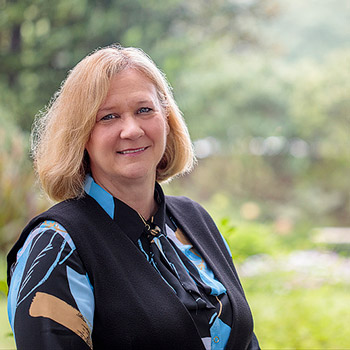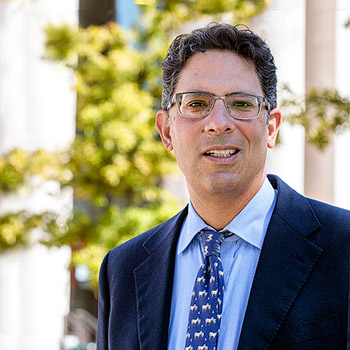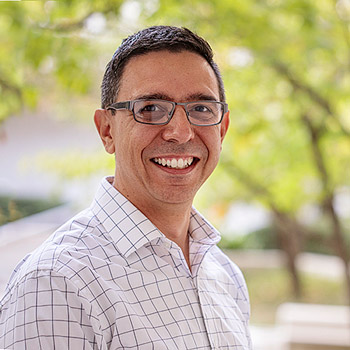Scholarship, research and the legacy of 9/11
UofSC faculty respond to the Sept. 11 attacks
The events of Sept. 11, 2001, changed the course of history. In addition to killing nearly 3,000 people — including two University of South Carolina alumni and one former faculty member — the terrorist attacks precipitated long-running wars in Afghanistan and Iraq, affected public policy and altered daily life for people in the U.S. and abroad.
But Sept. 11 also inspired scholarship and research, as faculty brought their expertise to bear on a range of emerging issues. That has been particularly true at the University of South Carolina:
- Susan Cutter traveled to New York City to study how geospatial information systems were being used in recovery efforts.
- Daniel Ostergaard entered a Ph.D. program at the Darla Moore School of Business and wrote a dissertation on seaport security.
- Lori Pennington-Gray helped the travel industry improve crisis management protocols.
- Wadie Said began researching the prosecution of federal terrorism cases.
- Juan Caicedo’s research in engineering broadened to consider not only the effects of natural disasters on the structural integrity of buildings but manmade disasters as well.
Daniel Ostergaard
Clinical professor of international business Daniel Ostergaard was recently named lead faculty for the Darla Moore School of Business’s new certificate of cybersecurity management program and has been recognized by Poets & Quants as one of the top 50 undergraduate business professors in the world. His dissertation, Business and Security in the Age of Terrorism: The Long-Term Effects of The September 11 Terrorist Attacks on Seaport Governance and Control, built on a long career in national security. Ostergaard spent more than a decade on active duty in the U.S. Coast Guard, served as Florida Governor Jeb Bush’s liaison to the Department of Homeland Security in Washington and, later, as executive director for the Homeland Security Advisory Council. But for Ostergaard, the events of 9/11 also hit close to home. A graduate student at the Naval War College in Washington, D.C., in 2001, he was studying counterinsurgency in the Georgetown campus library when he heard a low-flying plane roaring overhead. “I didn’t think much about it initially. There are airplanes all the time over D.C.,” he says. “Turns out, that was the airplane that then hit the Pentagon. Minutes later, someone started screaming, “We're at war! We're at war!”
The admiral and I went up to the roof and watched the Pentagon burn. For the next several days, of course, all traffic was shut down. We lived right across the street from a little elementary school baseball field on Capitol Hill. They took down part of the fence and moved in a Patriot missile battery, literally 25 yards from my front door. My wife would bake cookies and take them across the street. There were tanks on street corners, armored personnel carriers, the whole city had gone had militarized. So, 9/11 had a definite and direct impact on me.
My master’s thesis was on homeland security and defense, so I had a bit of a track record, I guess. And prior to 9/11, I had applied for an intelligence agency job and for a master’s program at Harvard. So, a couple of months go by, and on the same day I get a letter from Harvard accepting me at the Kennedy School, an offer from an intelligence agency and an offer from Governor Jeb Bush's office to serve as his Homeland Security liaison.
I deferred my acceptance to Harvard and ended up working as Jeb Bush’s liaison in D.C. Later, I was asked to join the administration as executive director for the Homeland Security Advisory Council. Our job was to help formulate long term policy recommendations and to think about the future: 25 years out, what does Homeland Security look like? How do we build out a system nationally? We worked on a host of issues.
I think Homeland Security has done a very good job over the years. I really do. But I’ve always felt that people in policy don't necessarily understand the ramifications of their decisions on people in the field and vice versa, and I really wanted to do more work on that, especially in terms of 9/11, so I decided to come to the Moore School and get a Ph.D., which is kind of the coin of the realm. My dissertation looked at the impact of policy decisions designed in response to 9/11, particularly relating to seaports and seaport security.
When 9/11 happened, I was already on this path, but I had thought it would be an interesting niche. And then I saw the Pentagon on fire that morning, and this horrible event happening. It was very sobering. That was one of those watershed moments that you know is going to fundamentally change life as you know it. And it did. And eventually it became the focus of my dissertation. — As told to Craig Brandhorst
Susan Cutter
As director of the Hazards and Vulnerability Research Institute, geography professor Susan Cutter leads a research group that studies vulnerability to natural and human-made disasters. Her team has been on the scene immediately after major hurricane landfalls in the United States, and within a few weeks of the 9/11 terrorist attacks, Cutter led a team to New York City, whose main emergency operations center had been inside the World Trade Center buildings.
One of the hallmarks of doing disaster research is being able to get into the field quickly after a disaster to capture data or information that would perish immediately afterward. That includes people's immediate recollections of what went on or being able to see the extent of the impact before being cleaned up.
We went to New York to see how geospatial information was being used in the response and initial recovery efforts after the 9/11 attack. All of New York City’s geographic information systems capability was lost when those buildings went down, and we were interested in seeing how new GIS systems were being set up and how the geospatial community across the country could assist. We had colleagues at Hunter College in the city who had some databases on their computers, which they unplugged and drove to the Javits Center so that the city and the state would have a makeshift emergency operations center that had GIS capability. It was really needed because there were hotspots in the wreckage of the World Trade Center — places that were still burning where it would be dangerous for rescue and relief personnel to go — and authorities could use satellite imagery with heat sensors to identify those spots.
I have been doing disaster research throughout my career, beginning at Three Mile Island and continuing on through many other events such as Hurricane Katrina and the Graniteville train wreck in South Carolina. The 9/11 terrorist attacks elevated hazards and disaster research within the discipline of geographers. I was president of the American Association of Geographers at the time of the attacks, and we were able to inform the federal government of the expertise that was available within the geographic community to address the terrorism problem.
We brought a group of scholars together who produced a set of working papers on the geographical dimensions of terrorism to show that terrorism isn’t just flying planes into buildings — there are root causes, geopolitical underpinnings and human geography considerations, and key geospatial data needs in understanding the threat. The discipline of geography was well positioned to be one of the key players in understanding all these dimensions of terrorism. And as homeland security was being established as a federal department, there would be a need for this kind of geographical and geospatial expertise. Our department here at South Carolina was a key player at DHS’s Center for the Study of Terrorism in its first few years.
In the 20 years since 9/11, terrorism has morphed. What we’re seeing now is cyber terrorism aimed at our digital world. We’re also seeing a huge threat that a lot of people are underestimating, which is domestic terrorism. Part of being a disaster researcher is keeping up with some of these mega transformations that are going on around the world and here at home. There’s a lot of work that needs to be done and every day brings us new challenges. — As told to Chris Horn
Lori Pennington-Gray
Lori Pennington-Gray joined UofSC in January 2021 as director and endowed chair at the Richardson Family SmartState Center of Economic Excellence in Tourism. Previously, Pennington-Gray was director of the Tourism Crisis Management Initiative, a research center that grew directly out of tourism crisis management research conducted in the wake of Sept. 11.
After 9/11, three of my colleagues and I were talking about what Florida was going to do when we didn’t have tourists, when planes were grounded and people were afraid to travel. “The Big Three” in Florida — Disney, Universal and SeaWorld — were wondering how to survive when arrivals from the international market halted and bookings shrank.
As a result of 911 and the impact on the tourism industry, there was an influx of research in this area, but researchers weren't necessarily committed long-term. We’ve seen this with the pandemic as well, and with other health crises. We knew we needed to have a concerted effort to focus on tourism and crisis management. That was kind of the “a-ha” moment.
It took a few years, but in 2007 we had an opportunity to start the Tourism Crisis Management Initiative, and out of that came the Tourism Crisis Management Criterion and Indicator List. Our process dovetailed into the Global Sustainable Tourism Council’s destination criteria and building out two of their sustainable tourism indicators related to safety and crisis management. We developed 33 criteria and 126 indicators to aid in effective crisis management planning for the tourism industry.
One of our messages is about how important it is to give clear, direct information to people so that they can make more informed decisions. Traditionally, the tourism industry had been apprehensive about providing information about hurricanes or wildfires — things that we know happen. It was like, “Well, we don't want to talk about that. We're the happy place.”
We had to show them the research. There need to be things in place so that if something does happen, the tourist feels that the industry is providing the service they deserve. They need to know that somebody is going to shepherd them through the evacuation process, the cancellation process, whatever it is. They have to feel a connection through all the different touch points, from the hotel front desk person to the management of the hotel to the larger networks throughout the hospitality industry.
All these years later, that’s commonplace. People realize that we don't live in a bubble. We know that if we travel to certain locations, we may be more at risk. It could be a rockslide, it could be a forest fire, it could be a heath crisis. But whatever it is, the industry needs to be prepared to manage the situation. — As told to Craig Brandhorst
Wadie Said
Law professor Wadie Said has taught criminal law, criminal procedure, immigration
law and seminars on international human rights law and counterterrorism at the School
of Law since 2007. In 2001, he worked in the litigation department at a corporate
law firm in New York City and watched the attacks from a work retreat in nearby Westchester
County. “The next day, I was walking on Broadway, somewhere up in the 80s, which is
something like six miles from Ground Zero, and I could see these massive plumes of
smoke,” he recalls. “There’s no question it was a terrible crime. What I became focused
on, though, was the response.” His 2015 book, Crimes of Terror: The Legal and Political Implications of Federal Terrorism Prosecutions (Oxford University Press) grew out of his research on material support laws and the
use of informants, as well as from his own courtroom experiences, particularly as
a public defender in U.S. v. Al-Arian, a criminal conspiracy case involving allegations
of terrorist activity.
From a legal perspective, there were many issues of great concern in the post 9/11 world — detention facilities, torture programs, extraordinary rendition. The government was engaged in lots of exceedingly serious and, in my view, terrifying things. What I felt I was in the position to both study and speak on was this idea of charging people with crimes related to terrorism — where the factual bases involved being politically active, for example, or associating with people that the government thought were dangerous — as opposed to participating in actual violent activity.
Post-9/11, many of the concepts and protections in the Constitution, especially the First Amendment, were put to the test in the crucible of criminal cases. A lot of this shift was fueled by a 1996 law, the ban on providing material support to foreign terrorist organizations. I've written a great deal about this law and I'm still writing about it — the ramifications of the law, its seeming correlation of Muslims with terrorist groups and what that means.
I was a federal public defender in Tampa, Florida, and I represented one of the defendants in a case that was really targeting another fellow called Sami Al-Arian, a computer science professor at the University of Central Florida. He had a long history in the Tampa Bay area of being watched by the FBI. His calls were listened to for many years because the government thought that he was an active member in a terrorist organization. And he certainly had communications with figures in the government-designated foreign terrorist organization, the Palestinian Islamic Jihad. But the government was charging him and my client and a couple of others with being part of a RICO conspiracy to commit murder abroad based on the actions of a group in the Middle East, nothing to do with America. They were also charged with providing material support to this group.
The evidence was risible, but that didn't stop the government from announcing it had collected 27,000 hours of wiretapped phone calls, and then introducing hundreds of communications purporting to show that this terrorist conspiracy existed and that the defendants were part of it. It was astonishing the level of effort the government was making to go after one guy — even by indicting several others to heighten the appearance of the existence of a terrorist cell — who had achieved a level of prominence as an advocate for Palestine from a more Islamist point of view.
Two of the defendants were acquitted outright at the end of three and a half years of pre-trial proceedings and a six-month jury trial. We later learned from interviews with the jury that the first acquittal took something like 15 minutes. The jury didn’t even know why he was on trial. But he sat there for six months.
The other person acquitted was a modest guy, a soft-spoken guy, a teacher in the Muslim community school, and he was collecting money to send to people in need. But the government wanted to make this out to be part of some sinister conspiracy to fund terrorism under the cover of humanitarian activities. Even though he was not my client, I helped his lawyer prepare the critical testimony of the guy’s father. He had brought all his handwritten notes in Arabic from all these transactions. In situation after situation, the father basically said, “Yeah, this family, they live in this village, we gave them this amount of money. Their dad died doing construction. This family, the son was disabled so we gave them money to help buy a wheelchair.”
The government's argument was completely destroyed, and it sparked something in me. I thought, you know, more needs to be written about what the government is doing.
There's a special sentencing enhancement where people get higher sentences than what their crime allows if there's a terrorism angle. The prosecution can ask the court to rule that the charged conduct is “in furtherance of a federal crime of terrorism,” even though it may have been something like obstruction of justice, and someone who would be facing a year in prison for obstruction of justice is suddenly facing 17-and-a-half years. I felt like this legal architecture had been created over the years, and now it was being used to criminalize people's identity, their religion and certainly their points of view and associations.
Criminal law is designed to be very narrowly focused on the act: this person is charged with doing a certain crime or series of crimes; did they do it or not? Once you bring politics and events that can be easily politicized into a criminal prosecution, people can have different and strong points of view. And once the government says one point of view is de facto invalid, any action in furtherance of that view can be construed as supporting terrorism.
These types of accusations are leveled at people who look like me, but once they get out there's nothing stopping them from being leveled at people who look like you. That was the point of my book. This may be a narrow-ish topic, criminal terrorism — there haven't been that many federal terrorism prosecutions, something like a thousand since 9/11 — but beyond stopping the next 9/11 attack, I worry about the type of society we are in danger of becoming. — As told to Craig Brandhorst
Juan Caicedo
Juan Caicedo, a professor of civil and environmental engineering, specializes in structural engineering with an emphasis in structural dynamics. His research interests include structural dynamics, model updating, structural health monitoring, earthquake engineering and structural control. After initially focusing on building and infrastructure resilience to natural disasters, particularly earthquakes, he also began to consider “manmade disasters” such as the collapse of the World Trade Center buildings in the Sept. 11, 2001, terrorist attacks.
When I was 8 years old, we had a really strong earthquake that destroyed the city where I used to live in Colombia. And I think that hit my curiosity. I wanted to understand how that happened and try to prevent it.
My interests are in what you might describe as intelligent infrastructure. We want to have infrastructure that reacts to the environment — that a building, for example, is able to move and dissipate the energy of the earthquake and then be safe after the earthquake. I was looking at identifying damage in structures, using sensors, when 9/11 happened, and that quickly expanded my understanding that this technology can also be applicable to manmade disasters.
Within that scope of intelligent infrastructure, I’ve more recently looked at this idea of human-structure interaction. When we are in a building or on a bridge, there are interactions we have with that structure and that can help us determine things about the structure, but it can also help us determine things about the person.
Currently, we are studying the vibrations of floors and trying to do an estimation of a person's gait — a person's walking patterns. The goal is to identify changes in those walking patterns that might indicate the person is getting sick, less steady on their feet. The vision is that if we are able to successfully develop this type of sensor technology, then we can install these in people's homes and help them live independently longer and more safely. – As told to Page Ivey
